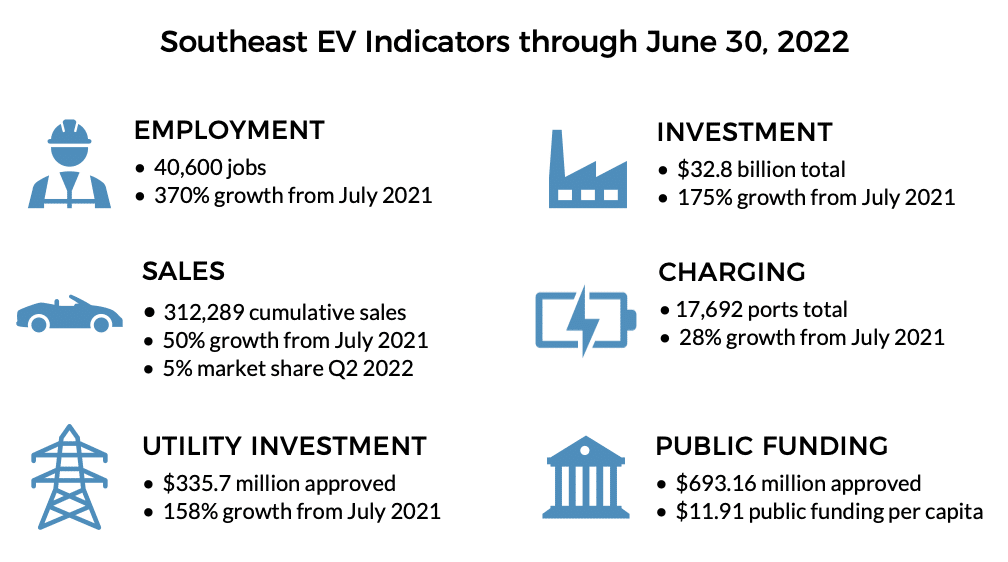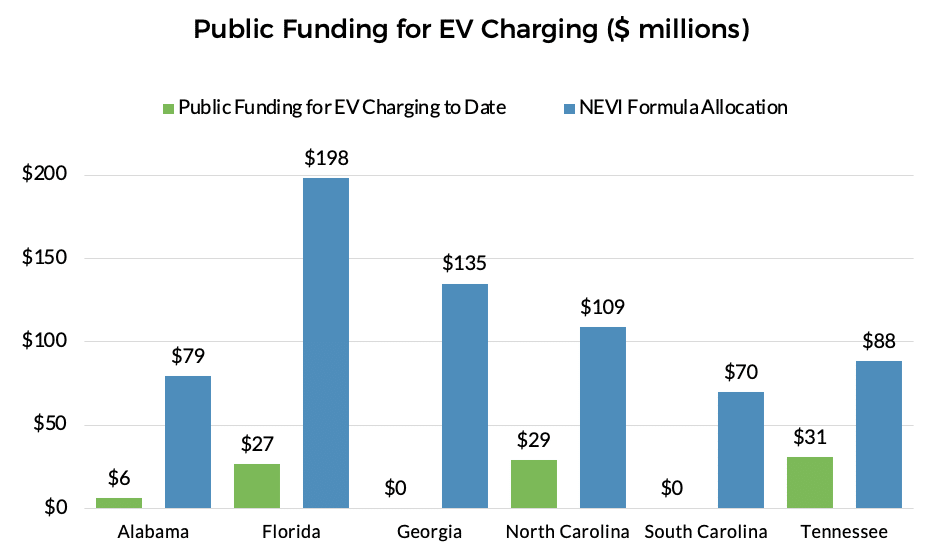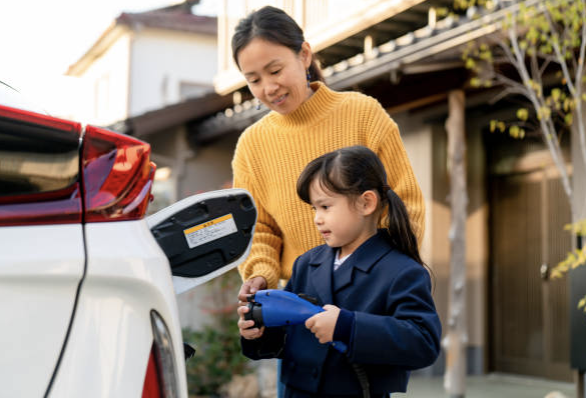Today we celebrate the one-year anniversary of the Bipartisan Infrastructure Law (BIL), aka the Infrastructure Investments and Jobs Act (IIJA), which President Biden signed into Law on November 15, 2021. The law authorized a historic investment of $1.2 trillion in transportation and infrastructure spending, with $550 billion for “new” investments and programs. It is expansive in its scope, ranging from energy and power infrastructure to water infrastructure and more. Funding from the IIJA is especially transformative for scaling electric transportation, especially when combined with the eligible electric vehicle (EV) funding in the Inflation Reduction Act (IRA), signed later within the same fiscal year.
IIJA: Game-Changing Historic Investment in Electric Transportation
The IIJA and IRA funding are injecting $100 billion of capital into the American economy to build out the EV industry. That’s a whopping 30 times more than cumulative previous EV spending by Uncle Sam. The IIJA dedicates funding for vehicles and charging infrastructure, as well as research and development for battery components and upgrades to the grid to support EV adoption. Take a comprehensive look at the individual funding streams.
Manufacturing in the Southeast is So Hot Right Now
The IIJA funding is particularly beneficial to the Southeast as many of our states are top American manufacturers of light, medium- and heavy-duty electric vehicles and employ a workforce of over 40,000 strong. SACE’s recent report “Transportation Electrification in the Southeast” examines year-over-year growth and finds a 370% increase in EV manufacturing jobs since July 2021. The IIJA funds have supercharged the industry and spurred private spending as well. This past year, record numbers of manufacturers announced an increased investment to build both batteries and vehicles. To date, $32.8 billion in private spending has been invested in manufacturing. This represents an impressive 175% in growth from June 2021 to June 2022.

National Electric Vehicle Infrastructure (NEVI) Program: Rolling out Infrastructure
One of the biggest barriers identified to the widespread adoption of electric transportation is the fear of inadequate charging infrastructure for long-distance travel. The NEVI Corridor funds were designed to overcome this hurdle by adding 500,000 stations along the nation’s travel corridors. Every state had to submit an implementation plan to the Federal Department of Transportation as an initial requirement, and this past year, all states’ plans were approved. The State Departments of Transportation are on pace to begin allocating the initial 2022 tranche of $100 million.
Another metric SACE tracks in our “Transportation Electrification in the Southeast” report is public funding for charging infrastructure. The NEVI Formula Funding Program will provide Southeast states with $680 million to build public fast-charging stations over the next five years. Previous funding for fast-charging infrastructure in the Southeast totaled $93 million and primarily came from Volkswagen Settlement funding. As demonstrated below, NEVI funding will far eclipse existing public investments in EV charging in the Southeast.

EPA Clean School Bus Program: Cleaner Buses, Healthier Kids and Communities
Last month, the EPA announced the school districts that were awarded one of the inaugural Clean School Bus Program (CSBP) rebates. The Clean School Bus Program will provide $5 billion over the next five years to replace existing polluting buses with cleaner, healthier, zero- and low-emission school buses. The initial funding opportunity was for $500 million, however, due to overwhelming demand for the program, the EPA nearly doubled its funding for the rebates, and is distributing $965 million. It will purchase approximately 2,400 new buses, 440 of them (almost entirely electric) coming to the Southeast. In total, Southern states were awarded $163,215,000 and South Carolina and Georgia were the third and sixth, respectively, highest awarded states in the country.

The health and emissions benefits to our children from this funding will be significantly impactful. Earlier in November, Orange County, South Carolina announced more than $6.3 million in rebates for Clean School buses in Orangeburg, South Carolina.
Celebrating the announcement, State Superintendent of Education Molly Spearman said, “we are grateful for the award and what it means for students and residents in our state. South Carolina can now tout having a modern state fleet, with plans to have one of the largest fleets of electric school buses in the country. We look forward to the cost savings and the many ways this will benefit our state, and we take pride in knowing that the next generation of school bus mechanics, bus drivers, STEM leaders, and inventors will be riding on electric school buses very soon.”
Also present at the event was Dr. Shawn D Foster, OCSD Superintendent who explained, “the significant investment that the EPA is making in South Carolina, but especially in Orangeburg County School District, is a gift that our students and families will benefit from for years to come. Some of the current buses in our fleet are nearly 15 years old, and the addition of these buses will greatly improve our student’s travel to and from school in a clean, safe, and, most importantly, healthy environment.”
Looking Forward
The IIJA and IRA provide a generational opportunity to remake our transportation systems in equitable ways. We can decarbonize, making our communities and environment more healthy, all while growing our manufacturing, building economic development, and providing job opportunities. Rulemaking and project development are ongoing with the new IIJA and IRA programs. The SACE electric transportation team has been and will continue to advocate for equitable and efficient program design so the health, financial, and environmental benefits of these programs are realized. Simultaneously, SACE has been engaged with stakeholders at the local level to educate them on funding opportunities as well as encourage participation in funding opportunities that the IIJA and IRA present.
Electrify the South is a Southern Alliance for Clean Energy program that leverages research, advocacy, and outreach to promote renewable energy and accelerate the equitable transition to electric transportation throughout the Southeast. Visit ElectrifytheSouth.org to learn more and connect with us.



